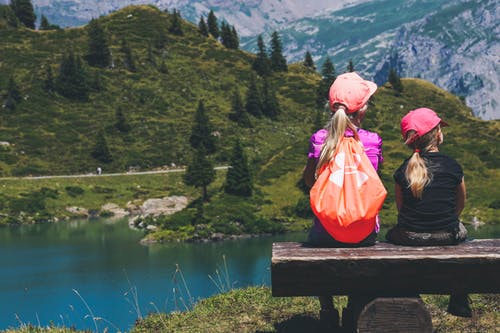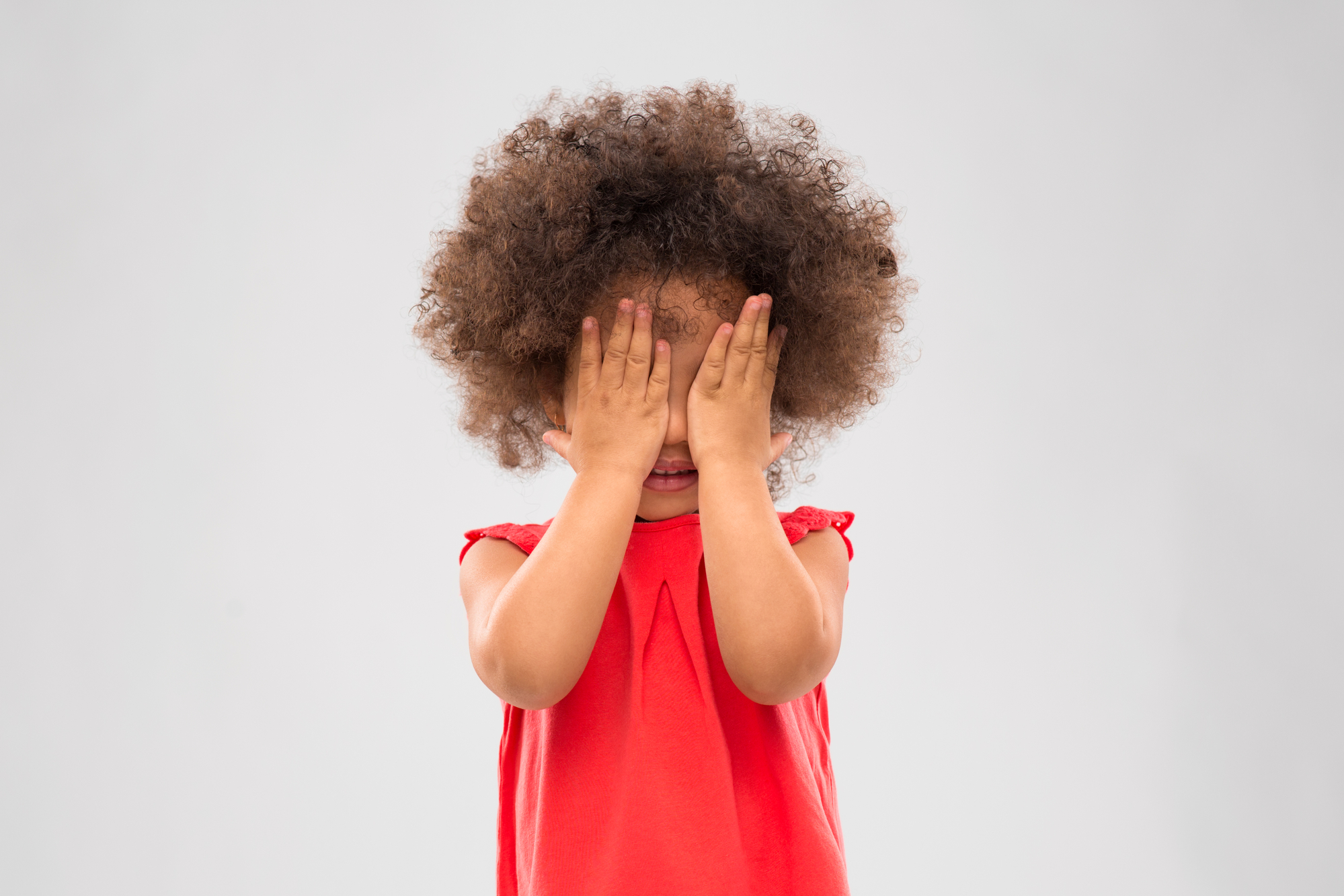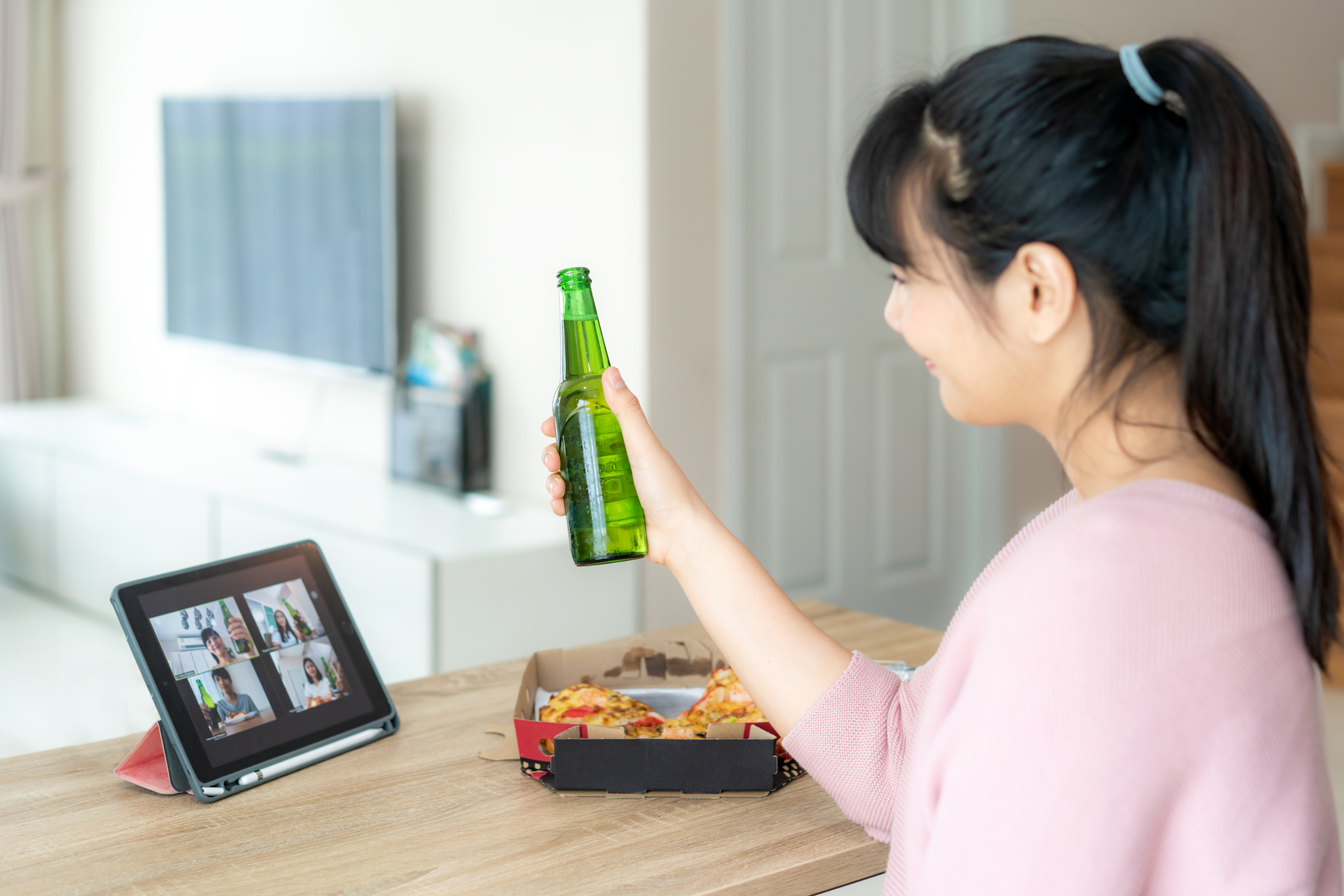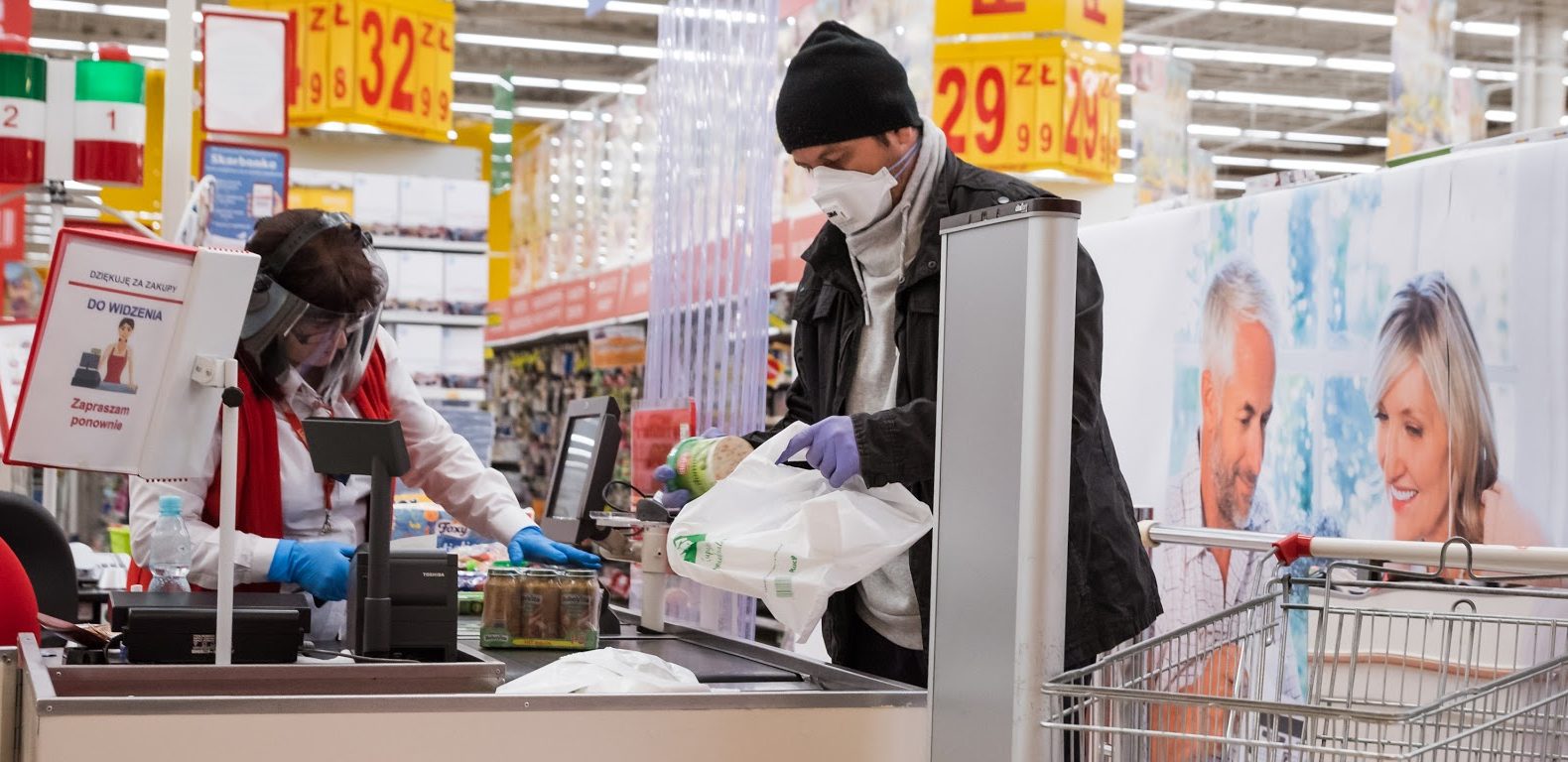Fun in (or out of) the Sun: Summer Safety During COVID-19
Fun in (or out of) the Sun: Summer Safety During COVID-19
Paige Schildkamp, MPH, Health Educator
As COVID-19 continues to impact our lives, our summers are, perhaps, going to look very different than we had planned. However, there are still many ways that we can safely be active and enjoy the summer weather and opportunities.
Here are some ideas for activities you and/or your kids can try:
- Send kids on a scavenger hunt. Try this one where kids have to find an object that begins with every letter of the alphabet. Or this nature-based hunt.
- Make dinner (or any meal) together.
- Beat the heat with a water fight.

- Have a game night. For extra fun, add elements like an opening ceremony or other pomp and circumstance.
- Help your teen find a virtual volunteer opportunity.
- Take on a fitness challenge, like Deck of Cards or Spell Your Name. Or create an obstacle course.
- Learn about family history.
- Take a walk or hike. NC Parks has a very cool passport program for kids.
- Have a dance party.
- Play a trivia game. There are lots of different themes and types online. As an extra challenge for older kids, have them come up with their own sets of questions and “lead” the game in turns.
- Yoga and Mindfulness activities. Try this Insight Timer or Happify for guided stress relief!
- Start a photo-a-day project.
- Read a book.
- Outside games like tag, or activities like jump rope and riding a bike. Use a chart like this one to track what activities your kids do. See if they can get the recommended 60 minutes of activity every day!
- Learn to draw, sew, crochet, or other craft skill.
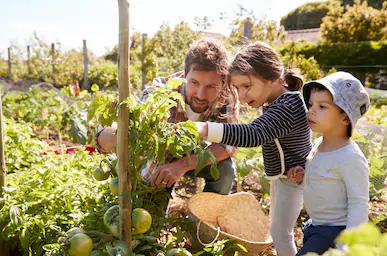
- Make fun and healthy snacks, like ants on a log, trail mix, popsicles, vegetable dip, or fruit ice cream.
- Build a fort.
- Find shapes in the clouds during the day or in the stars at night.
- Plant a garden. Poe can help!
For other resources about summer activities and events for kids, check with your local health departments or libraries and the Poe Center’s website and social media. Also, check out PlayWorks and CATCH at Home for more creative activity ideas. Even if things don’t look quite the same, we’re all still here providing educational opportunities for our youth.
While we are all having fun with these summer activities, and concentrating on protecting yourself and others from COVID-19, let’s not forget normal summer safety as well. Here are some important things to keep in mind:
- Water Safety
- Teach kids to swim.
- Always supervise children in and around water.
- All children should wear a properly fitted life-jacket when out on a boat.
- Heat Safety
- Stay hydrated - drinks lots of water!
- Never leave infants, children, or pets in a parked car, even if the windows are cracked open.
- Dress children in loose, lightweight, light-colored clothing.
- Try to schedule outside activities for morning and evening hours. Avoid spending too much time outside during the hottest midday and afternoon hours.
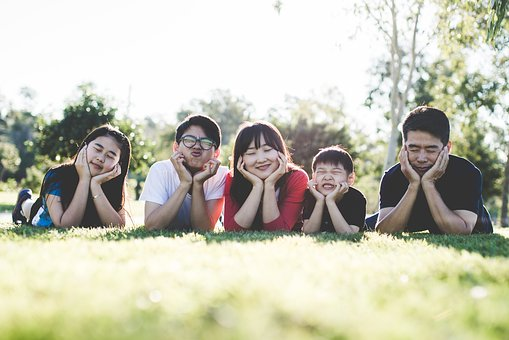
- Take cool showers and baths.
- Seek medical care for any signs of heat-related illness, including heavy sweating, dizziness, weakness, headache, hot or red skin.
- Sun Safety
- Always wear sunscreen.
- Wear clothes/hats that help cover skin and protect it from UV rays.
- Insect Safety
- Use an effective and safe insect repellent while playing outdoors.
- Check children for ticks after time spent outside.
- General Safety
- Get trained in CPR and basic first aid.
- Always supervise children on playgrounds and outside.
- Use gates and fences around the house and outside.
For more information on all these safety tips, check out this link from the CDC.
As a final reminder, as places start to reopen (like parks, playgrounds, pools, and summer camps), please be sure to follow all regulations about how to safely use these spaces. Poe will continue to update and share all information with you as it becomes available.
Wishing you all a safe, healthy, and FUN summer!
Featured Poe Program: Summertime Safety
Grade Level: Kindergarten – 5th
Program Length: 45 minutes
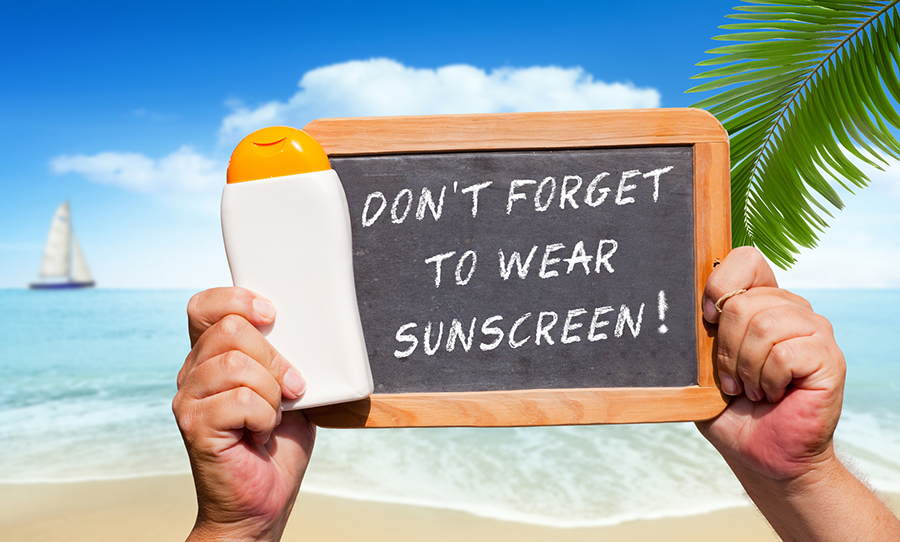 Safe outdoor fun is the focus of this program. Children learn about protection from the sun, signs of overheating and dehydration, safe warm weather exercise and nutrition, poisonous plants, bug bites, and more. Be active, stay safe, and have safe fun in the hot sun.
Safe outdoor fun is the focus of this program. Children learn about protection from the sun, signs of overheating and dehydration, safe warm weather exercise and nutrition, poisonous plants, bug bites, and more. Be active, stay safe, and have safe fun in the hot sun.
To schedule a virtual program with Poe, contact our scheduler Amanda Bodenheimer at [email protected] today.
Featured Video: Let's Get Moving! A Mini-Lesson with Paige from the Poe Center
Why do our bodies need physical activity? Do you know? Come find out with Paige, one of our Poe Center Educators! Follow along as Paige covers the basics: why we need activity, how it benefits our bodies, and a fun physical activity challenge you can complete at home. So get up, get moving, and come play with Poe!
Check out all of our Mini-Lessons here!
Coping with COVID-19: Dealing with Stress During a Pandemic
Coping with COVID-19: Dealing with Stress During a Pandemic
Virginia Johnson, CSAPC - Substance Use Prevention Director
May is Mental Health Month. Right now, many of us are experiencing unprecedented levels of stress, fear, and anxiety. Therefore, we felt it was important to take a closer look at these emotions and how to deal with them in a way that promotes good mental health.
Identifying emotions.
Fear is our body’s emotional response to a threat. Anxiety is our body's emotional response to a perceived or upcoming threat. Both of these emotions increase the level of stress hormones in our body. This can be critical in short spurts because it increases our heart rate, respiration, alertness, and attentiveness as we prepare to make quick decisions for “fight” or “flight,” also known as survival mode. Think about the feelings you may experience if you were riding a bike and suddenly were faced with an oncoming car. Your stress hormones would likely kick in and send a signal to move out of the way. Once the threat of collision passes, the feelings you experience are probably short in nature and helped you make a quick decision that kept you safe.
However, during long-term events like the Coronavirus pandemic, our bodies go through prolonged periods of fear and anxiety. Many people are experiencing stress over the loss of a job, trying to work without childcare, worrying about protecting yourself and family from the illness. This stress can begin to take a toll on our physical, mental, and emotional health. Ongoing high levels of stress hormones in our bodies can lead to irritability, increased anxiety, depression, headaches, digestive issues, weakened immune systems, and insomnia. So how can we cope with this stress?
It's important to recognize that everyone deals with stress differently and that fear and anxiety can be overwhelming for some people, including children.
Coping with stress.
It's important to take care of yourself, your loved ones, and your community. Simple ways to take care of yourself and your family include:
- Eat a well-balanced nutritious diet and exercise regularly.
- Get plenty of sleep. The CDC recommends 8-12 hours per night for school-aged children and seven or more hours for adults.
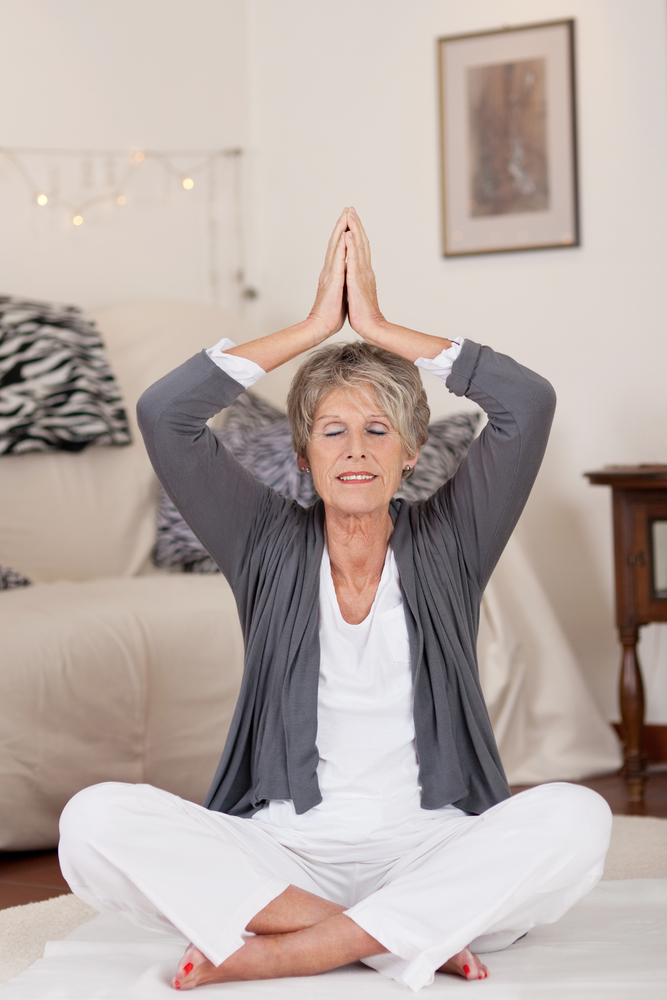
- Stay focused through breathing, meditation, and stretching. Try this breath loop video from one of the Poe Center's health educators.
- Limit the amount of news you consume.
- Take time to relax and do something you enjoy.
- Avoid alcohol and other drugs, because these substances can take control away from you.
- Talk with someone you trust about things that bother you.
- Stay connected with your loved ones and your community.
Helping others manage their stress can actually help you reduce your stress as well. Check on your friends, family, and neighbors. Take a moment to make a phone call, send a text, reach out on social media, or even send a handwritten card. Letting someone know you are thinking of them can go a long way.
Starting a conversation.
The United States has been celebrating mental health during the month of May since 1949, but many people are still hesitant to have open and honest conversations about things that trouble them. Many blame awkward or uncomfortable feelings (38%) and the fear of being judged (29%)¹. So what’s the first step to helping others feel comfortable connecting with and talking about emotions? Raising awareness of the importance of mental health. This includes the physical, mental, and emotional well-being of children, families, and communities. Remember: you do not need to have any special training or education to have a meaningful conversation about mental health and wellness. It’s okay to take the conversation a little further when you check on your friends. Check out these tips from the #RealConvo¹ campaign:
- Begin the conversation by asking how the other person is doing.
- Engage in the conversation by sharing a personal worry or moment of hope.
- End the conversation with gratitude for the chance to connect on this deeper, meaningful level.
- Leave the door open for future conversations and continue to check-in on a regular basis.
Promoting health and wellness with our children.
Genuine, honest, and age-appropriate conversations about difficult subjects help children process the sometimes-scary world around them and help teach skills for supporting mental and emotional health.
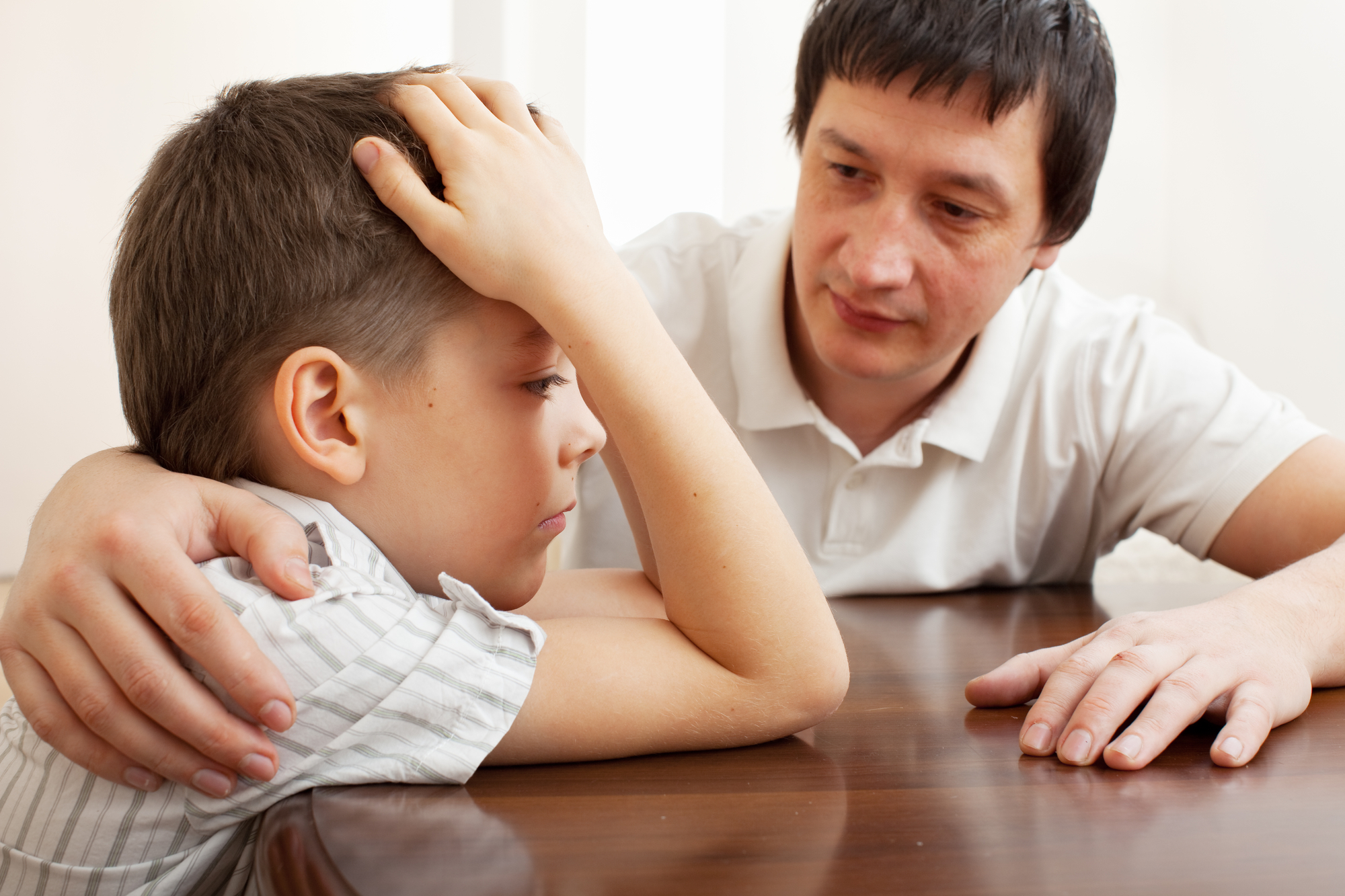 These conversations also help to break down the stigma around mental health by teaching children that it is okay to talk about uncomfortable subjects. Here are a few tips from Common Sense Media on How to Talk to Kids about Difficult Subjects² to consider when talking with children about difficult situations.
These conversations also help to break down the stigma around mental health by teaching children that it is okay to talk about uncomfortable subjects. Here are a few tips from Common Sense Media on How to Talk to Kids about Difficult Subjects² to consider when talking with children about difficult situations.
-
- Preschool: Talk about the situation, affirm their feelings, and reassure them that they are safe. Remember, it's important to discuss both your and your child’s feelings in simple terms that he or she will understand, such as "mad," "sad," "scared," or "happy."
- Elementary: Start conversations by asking what they know and how they feel. Let them know it is okay to feel those emotions. Ask questions to encourage and promote critical thinking. Highlight any positive aspects of the situation.
- Middle and High School: Reassure teens that it is safe to talk about the situation and about their feelings. Ask open-ended questions. Share your perspective and values. Brainstorm solutions, options, and decision-making processes.
Before your day gets too hectic, make sure to take time for you and your family to appreciate good things that may be happening - birthdays, game nights, time with pets, etc. Remember to breathe, eat healthily, exercise, and sleep. Stay connected to loved ones. Each phone call, text message, or handwritten card can mean so much in someone's life.
Mental health and coping can be scary subjects, but they don't have to be. Take time to acknowledge your emotions, have open and honest conversations with those around you, and treat yourself with kindness. This is a difficult time for many people, so paying attention to your mental health is more important than ever.
Resources:
1. American Foundation for Suicide Prevention
Featured Poe Program: Girl Talk/Guy Talk Online
Grade Level: 4th-7th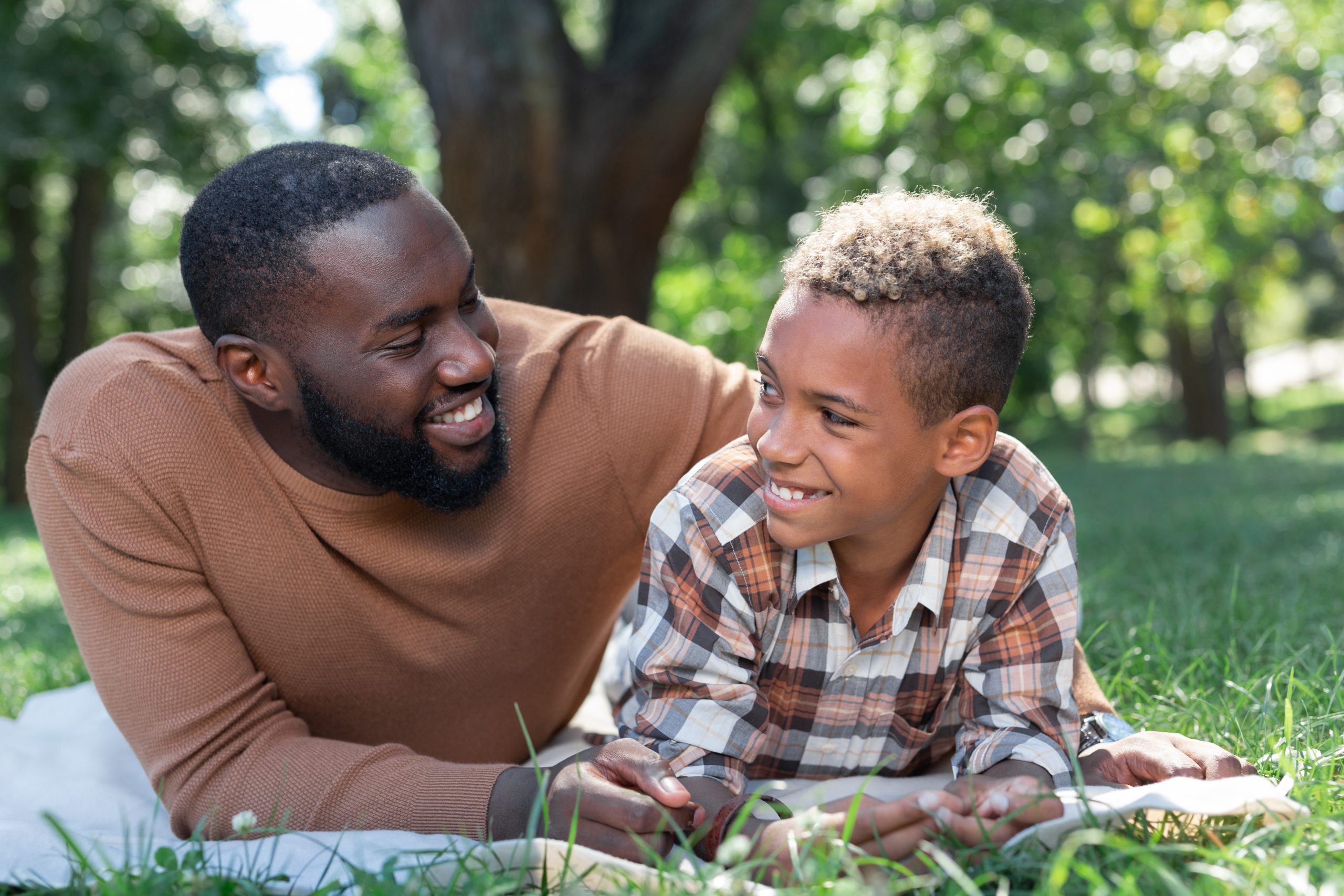
The Poe Center's Girl Talk and Guy Talk programs address the timely topic of adolescent growth and development and the physical, social, and emotional changes that girls and boys experience during puberty. The programs are designed to facilitate meaningful conversations between kids and their parents/guardians.
Girl Talk - Saturday, June 6, 2020
Guy Talk - Saturday, June 20, 2020
Educational props, hands-on activities, and candid discussions help parents and children explore a range of topics from the workings of the reproductive system to hygiene and more. These programs are available through live virtual sessions.
The Poe Center is now offering a wide variety of online programs. Email Poe's program scheduler Amanda Bodenheimer to plan a program.
Featured Video: The Brain and Mental Health Mini-Lesson
Grade Level: All ages
Welcome to a mini-health lesson with the Poe Center! Learn how to maximize mental health while Rebecca talks about the amazing workings of the brain. Explore the parts of the brain, and learn how messages are sent from the brain to the body. Rebecca discusses how stress comes from the brain and travels to the body and leads breathing exercises that calm the brain, controlling stress. For more mini-health lessons from the Poe Center, visit our YouTube Channel.
Pass the "Quarantini:" When Alcohol Consumption Meets Social Distancing
Pass the "Quarantini:" When Alcohol Consumption Meets Social Distancing
By Rebecca Wenrich Wheeler, CPS, LCMHCA
Substance Use Prevention Specialist
“Quarantini,” “virtual happy hour,” “coronacation:” terms that would have been ridiculous just two months ago are now a part of daily media conversation. Whether disappointed that we are unable to watch our favorite sports teams with friends, unable to relax after work with colleagues, or no longer attending the last quarter of college, we probably turned to technology to connect with others. Unsurprisingly, alcohol has become a central focus of virtual connections. “Quarantine and Chill” evenings and Zoom parties have replaced restaurants and bars. Memes of working parents day-drinking to survive homeschooling and virtual beer pong parties gather thousands of likes on social media. April is National Alcohol Awareness Month, which a good time to reflect on how our culture’s relationship with alcohol has changed during these unprecedented times.
According to market research by Nielsen, “alcoholic beverage sales shot up 55% in the third week of March compared to the same time last year” (Valinsky 2020). Beer sales, which had been on the decline, have increased, and hard seltzers and lemonade rose by a whopping 106% (Valinsky 2020). Stores might be limiting the amount of toilet paper, but alcohol is flying off the shelves. Three-liter boxed wine sales are up 53% and 24-packs of beer sales are up by 24% (Jernigan 2020). Social Standards, a market research technology firm, studied social media posts that mentioned alcohol consumption. Women aged 30-44, from predominantly upper-income urban areas, most referenced Virtual Happy Hours, and multicultural women aged 25-29 most mentioned alcohol consumption and Netflix (Kendall 2020). Bottom line: we’re drinking our way through the “coronapocolypse,” and that will likely have long-reaching health effects even after the pandemic ends.
The National Institute on Alcohol Abuse and Alcoholism defines “low-risk” alcohol use as 2 drinks a day for men and 1 drink a day for women. Exceeding these limits has shown to put people at greater risk for immune system suppression and increased mental health challenges. Research indicates that alcohol use negatively impacts “humans' gastrointestinal system, altering the function of healthy gut microbes linked to immunity. Alcohol can also impair key immune cells in the lungs and damage epithelial cells that line the lungs' surface (where COVID-19 can also attack),” (Courtney and Reeves 2020). This lung damage makes it harder to fight off respiratory illnesses like COVID-19. Not only does chronic alcohol use affect the immune system, but an episode of binge drinking can impact the immune system the following day or longer. In the days after a binge-drinking episode, a person has a greater risk of catching an illness (Courtney and Reeves 2020).
Additionally, alcohol use can trigger or worsen existing depressive symptoms. Research indicates “that having either AUD [Alcohol Use Disorder] or a depressive disorder roughly doubles a person’s chances of developing the other” (Walker 2020). Alcohol use mimics a chemical in the brain called GABA. The role of GABA is to block particular messages from being sent between nerve cells. When GABA blocks messages, the nervous system is sedated. Ironically, if someone drinks to numb their feelings of depression, the sedation effect will actually increase feelings of depression.
Moderating alcohol consumption during the stay-at-home order is not only important to maintain immune system functioning and mental health wellness, but also model healthy behavior for youth living in the home. Children watch how adults react to stressful situations and often model those responses.
Tips for adults: Moderating your alcohol consumption during COVID-19
- Manage alcohol use by being mindful of what triggers consumption, such as stress and social activities.
- Be mindful of how drinking affects your mood and reactions (Ascher 2017).
- Incorporate exercise into your routine to boost dopamine (that feel-good chemical in the brain!).
- Place alcohol out of reach and out of sight, to both minimize your consumption and make it less likely for your youth to obtain.
- Understand how adults model alcohol consumption for youth. A parent reaching for alcohol after a stressful day sends a loud signal to their child.
- Recognize the warning signs of Alcohol Use Disorder and reach out for help if needed.
For other tips on moderating alcohol consumption visit this website.
Learn more about the impact of stress during COVID-19 here.
Resources:
Walker, L. K. (2020, April 7). Alcohol and Depression: How to Treat Co-Occurring Issues.
Featured Poe Program: Choices and Consequences
Grade Level: 5th
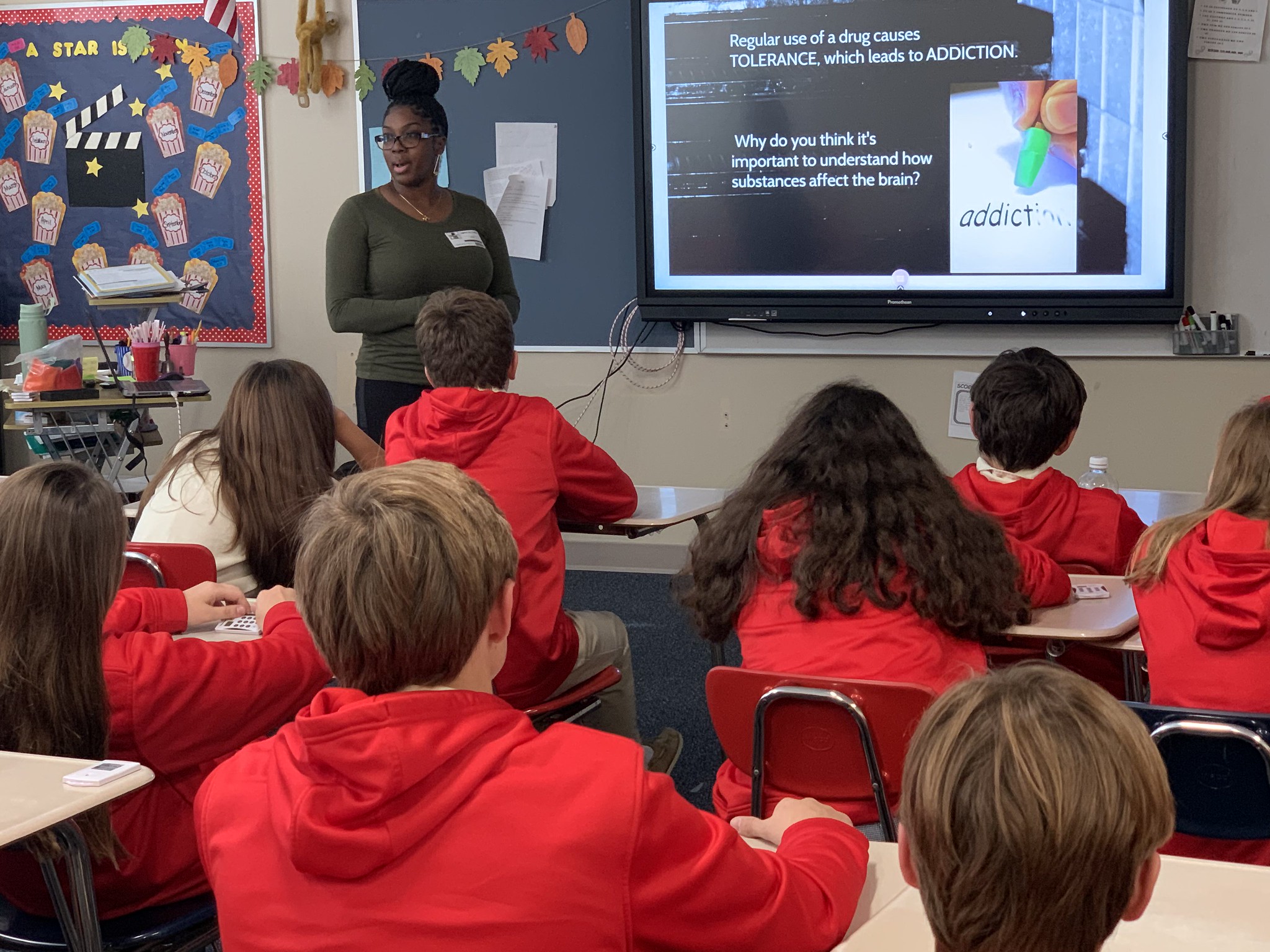 Students will learn the truth about the dangers of inhalants and the gateway drugs (tobacco, alcohol, and marijuana) through an interactive classroom game modeled after the popular television program, Are You Smarter Than a 5th Grader? The dangers and consequences associated with use and abuse will be discussed through the use of exhibits, BrainPop videos, and activities. Students will conclude the session with participation in an activity reinforcing refusal skills.
Students will learn the truth about the dangers of inhalants and the gateway drugs (tobacco, alcohol, and marijuana) through an interactive classroom game modeled after the popular television program, Are You Smarter Than a 5th Grader? The dangers and consequences associated with use and abuse will be discussed through the use of exhibits, BrainPop videos, and activities. Students will conclude the session with participation in an activity reinforcing refusal skills.
The Poe Center offers a variety of substance use prevention programs. We are now scheduling virtual programming! Email Poe's program scheduler Amanda Bodenheimer for details about online programs. To register for future in-person programs, complete Poe's program request form. We hope to "see" you soon.
Featured Activity: Make a Peanut Butter Smoothie!
Grade Level: All ages
Looking for a fun activity to do together before joining a video chat party? Make a smoothie! This smoothie is a tried and true Poe Center favorite. Plus, it's a great beverage to sip while you video chat your loved ones.
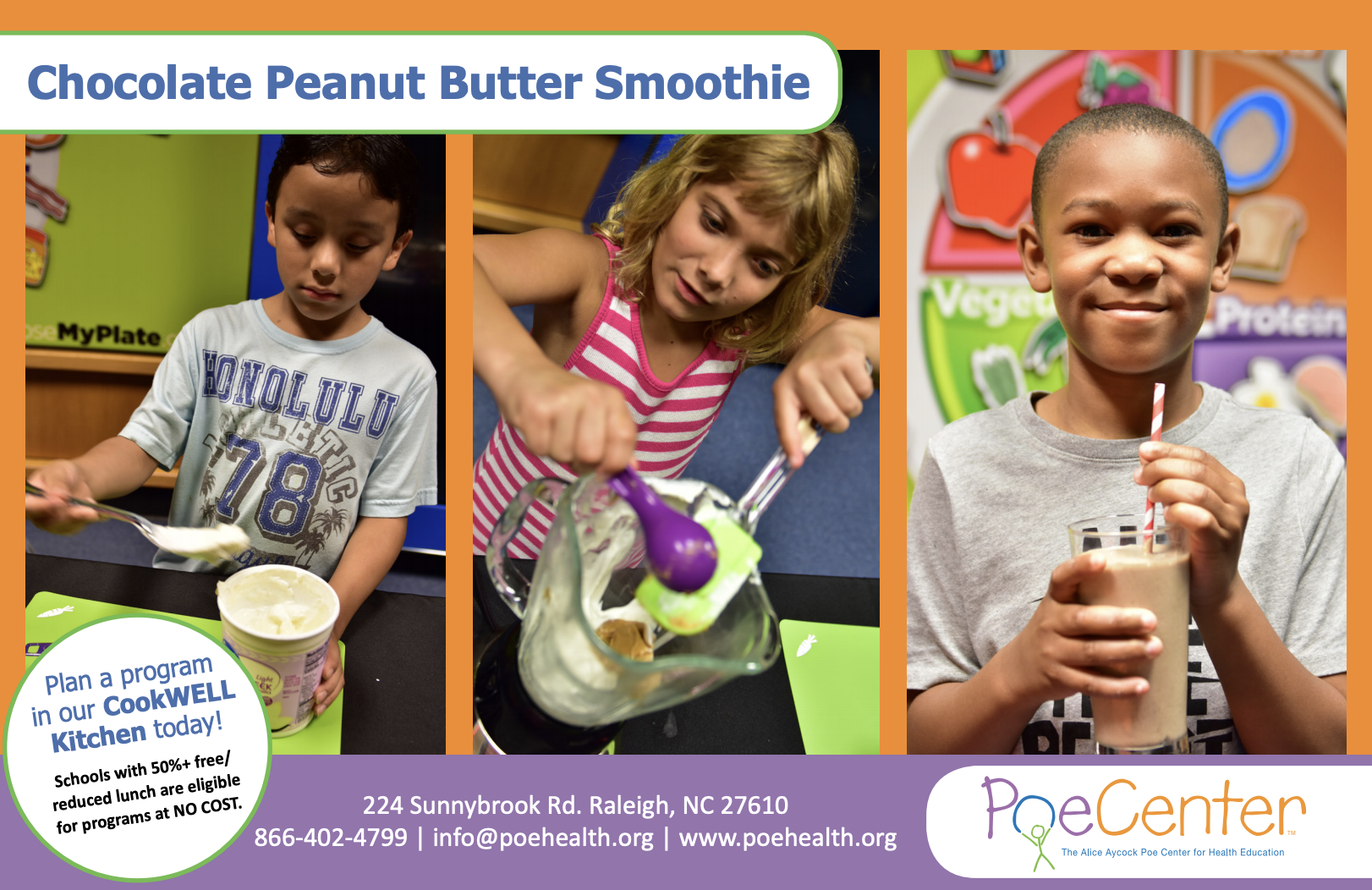
Ingredients:
1 cup low fat vanilla Greek yogurt
2 tbsp peanut butter
1 tbsp unsweetened cocoa powder
1 banana
½ cup low-fat milk or milk alternative
½ cup ice
Optional- 1 tsp cinnamon
Cooking instructions: Measure all ingredients and place into a blender. Pulse until smooth. If too thick, add more milk. If too thin, add another banana. Enjoy cold!
Food Safety During COVID-19: 9 Tips for Handling Food Safely
By Julianne Tobin, MS, Dietetic Intern
With all the COVID-19 guidelines for washing hands, physical distancing, and avoiding public places, you may be wondering how this affects your food. Grocery stores are one of the few places we can go, but we are encouraged to shop less frequently, sanitize our hands and grocery carts, and keep at least six feet away from others while in the store. With all of these precautions, you may be curious about the safety of the food you are buying. After all, everything else in our normal routine seems to be different, how should we approach buying and preparing food for ourselves and our families?
According to the CDC, there is no evidence of food or food packaging being associated with the transmission of COVID-19. COVID-19 is a respiratory disease. Unlike gastrointestinal viruses such as norovirus or hepatitis A that make people sick through contaminated foods, there is no evidence that COVID-19 can be transmitted through foodborne exposure.* It is best to practice general food safety guidelines to prevent foodborne illness during times such as these when the healthcare system is already overtaxed (Wadyka 2020). So shop for and enjoy the foods you normally do, and maybe explore some new recipes! But remember to follow food-safety guidelines that are always recommended.
Here are some general food safety guidelines which are always good to follow (FDA 2020):
1. Wash your hands before and after cooking for at least 20 seconds with warm, soapy water. Also, wash your hands during cooking if handling raw meat, poultry, seafood or eggs.
2. Wash cutting boards, utensils, countertops, and dishes after use with warm, soapy water.
3. Rinse fresh produce with running water or use a clean produce brush. Remember, it is not recommended to use soap or diluted bleach as these substances may cause an upset stomach. If the produce is labeled “pre-washed” you do not have to wash it again.
4. With canned goods, rinse the lid before opening to prevent dirt or other contaminants on the outside of the can from getting on the food.
5. Check expiration dates before food preparation. A lot of us are utilizing ingredients we find in the pantry or freezer to stretch our meals. This is a great tactic to limit grocery shopping, but make sure your items are not expired before using them in your next dish!
6. Use one cutting board for fresh produce and a separate cutting board for raw meats, poultry, and fish.
 7. Cook food to a safe internal temperature:
7. Cook food to a safe internal temperature:
-145℉ for fresh pork, beef roasts, steaks, chops, and fish
- 160℉ for eggs and beef
- 165℉ for poultry, ground beef, casseroles, leftovers, and precooked ham
8. Refrigerate perishable foods and leftovers promptly, food should be refrigerated within 2 hours of cooking. Refrigerate and freeze groceries promptly when returning from the store.
9. Never thaw foods at room temperature, safe thawing methods include in the refrigerator, under cold running water or in the microwave
Remember, the FDA and USDA are still working to track foodborne illness and ensure a safe food supply, do your part to follow safe food practices at home!
At the Poe Center, we know the importance of kitchen safety! You can browse our kitchen safety resources detailing topics like proper food storage, handwashing techniques, knife safety and more by clicking here. There are also recipes you may want to explore with your family, cooking is a great way to exercise your creativity and enjoy some family time at home!
*Disclaimer: Information regarding COVID-19 is constantly changing, it is best to check the CDC website for the most up-to-date information.
Works Cited:
Answers to Common Questions About Coronavirus and the Food You Eat.
Coronavirus Disease 2019 (COVID-19) Frequently Asked Questions.

